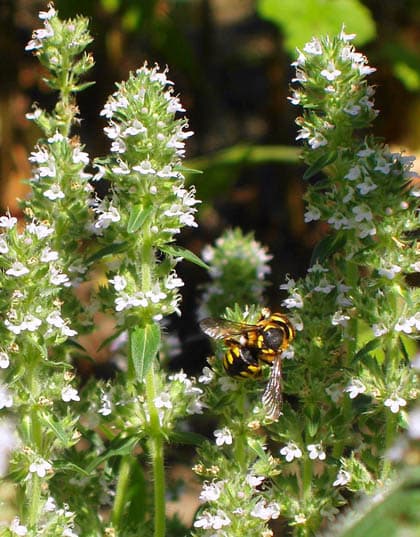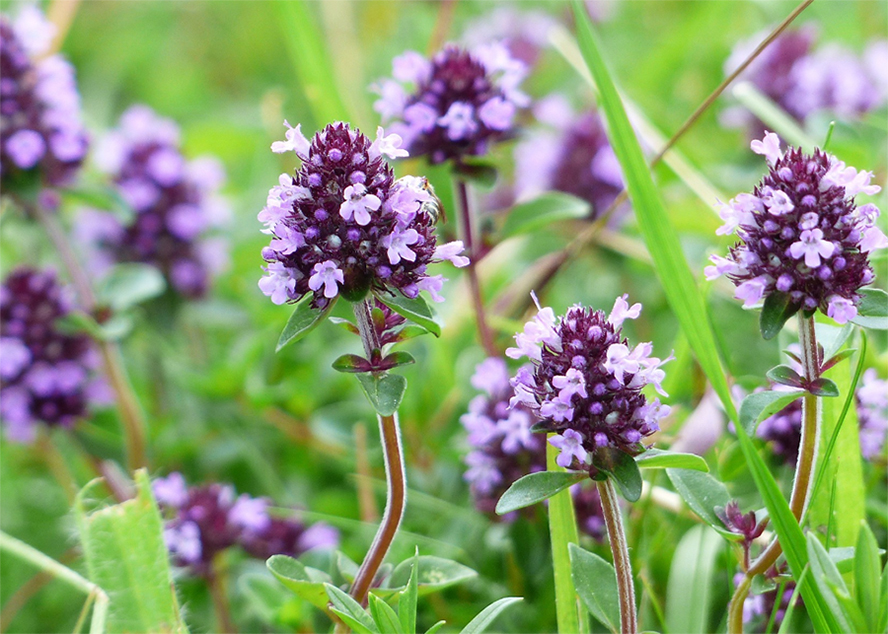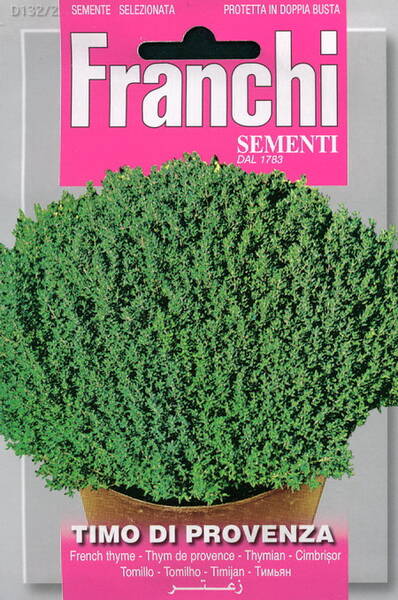A small perennial shrub.
The stem is strongly branched, up to 30 cm high. The leaves are small (5-10 mm).
The flowers are small, corollas lilac-pink, sometimes white. Blooms in May - June.
1.0 g = 3400-4800 seeds.
.jpg)
Collection time: June - July.
For medical purposes, harvest the aerial part of the plant. Harvest it in the full flowering phase by cutting off the above-ground mass without the rough lignified lower parts of the stem with a knife or pruner. Dry in the shade in a well ventilated area. Shelf life of raw materials is 2 years.
The herb contains: thymic acid, ursolic, oleanolic, caffeic, chlorogenic, quinic and other acids, thymus-saponin and flavonoids, essential oil, which includes thymol, carvacrol, cymol, pinene, borneol, caryophyllene, linalool and other substances.
Location: prefer sunny places. Plants withstand partial shade and even shading, but in such conditions they stretch and bloom poorly.
Soil: light, fertile, well-drained soil that is alkaline or neutral.
Planting: can be carried out at any time - the plants are unpretentious and drought-resistant, but not in late autumn, as the plants should take root well before frost.
Care: it is not necessary to fertilize the plants, at best, you can add a little ripe compost or horn flour to the soil. If thyme bushes are trimmed regularly, they will be dense and compact. Do this in early spring or after flowering. The shoots are shortened by about two-thirds - to the lignified part.
Watering is necessary only in dry spring and summer, when there is an active growth of young shoots and the plants are preparing for flowering.
There are no diseases and pests on thyme. Plants are harmed only by excessive moisture on heavy clay soils in prolonged, rainy weather and winter warming. The best measure to combat this evil is good drainage and mulching the soil around the plants with fine gravel.
Reproduction: seeds, cuttings and dividing the bush. The simplest is reproduction by dividing the bush. For division, the bush is dug up, the roots are disassembled and the plant is carefully divided into parts. Twigs creeping along the ground are separated during the entire growing season and planted immediately in a permanent place or separately for growing.


Garden thyme, common thyme, English thyme, French thyme.
* Pork roll with thyme and lingonberries.
Place meat on cutting board. Make a cut in the center along the fibers, not reaching the bottom 0.5 cm. Spread the meat with your hands and make deep transverse cuts inside the pieces of the layer on the right and left, not reaching 0.5 cm to each edge. Open the piece of meat like a book. Cover the meat with film and beat with a hammer so that the layer thickness is 1.5-2 cm. Pour sweet soy sauce over the meat. Grind half the lingonberries to puree. Season the meat with pepper, salt, sprinkle with thyme leaves, coat with lingonberry puree and sprinkle with the remaining lingonberries. Roll the meat tightly into a roll and tie it with kitchen string.
Prepare the glaze: mix honey, 1 tbsp. l. soy sauce and dry garlic. Bake in an oven preheated to +180°C for 50-60 minutes, periodically brushing the roll with glaze. Serve hot or cold.
Pork - 1 kg, thyme - 1 bunch, lingonberries - 200 g, soy sauce (sweet) - 3 tbsp. l., salt and ground black pepper - to taste, garlic (dry) - 1 tsp, honey - 1 tsp.












